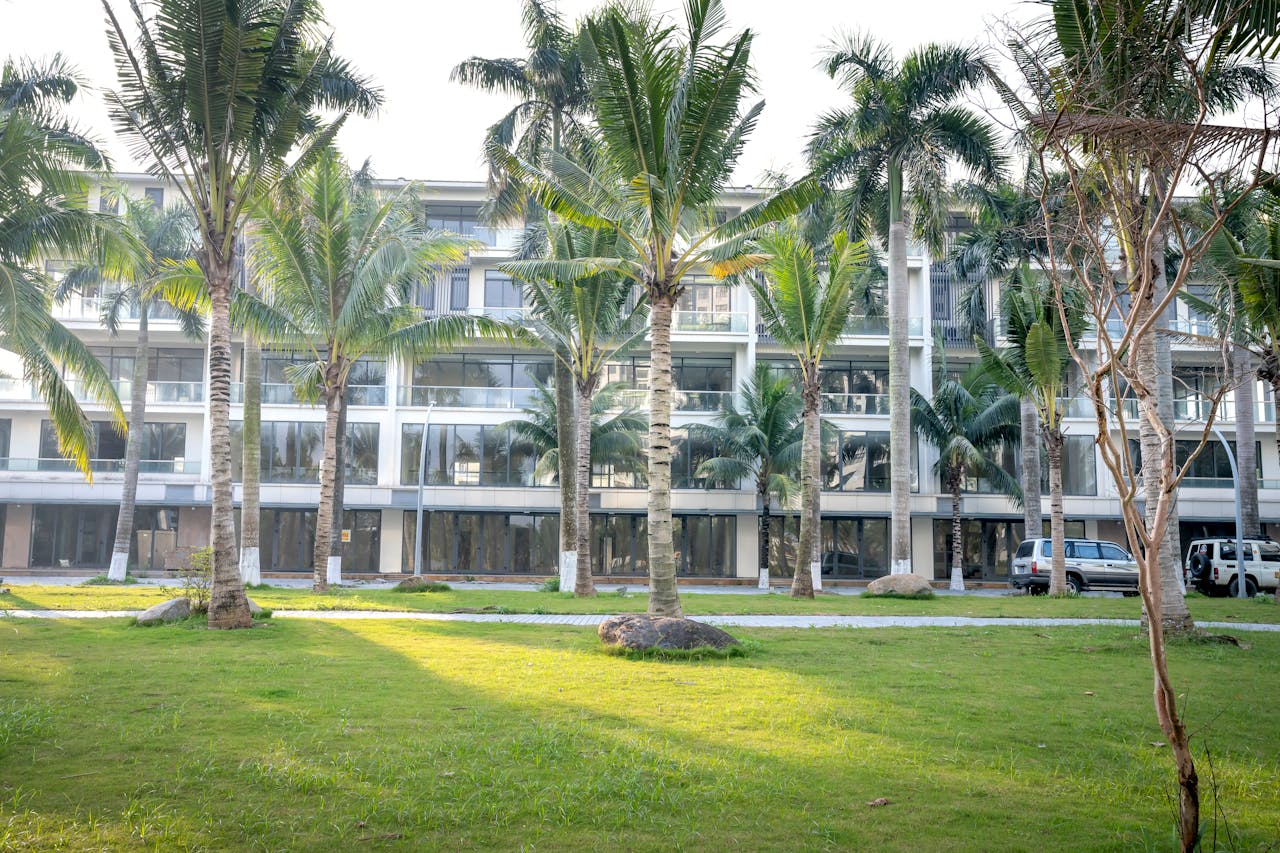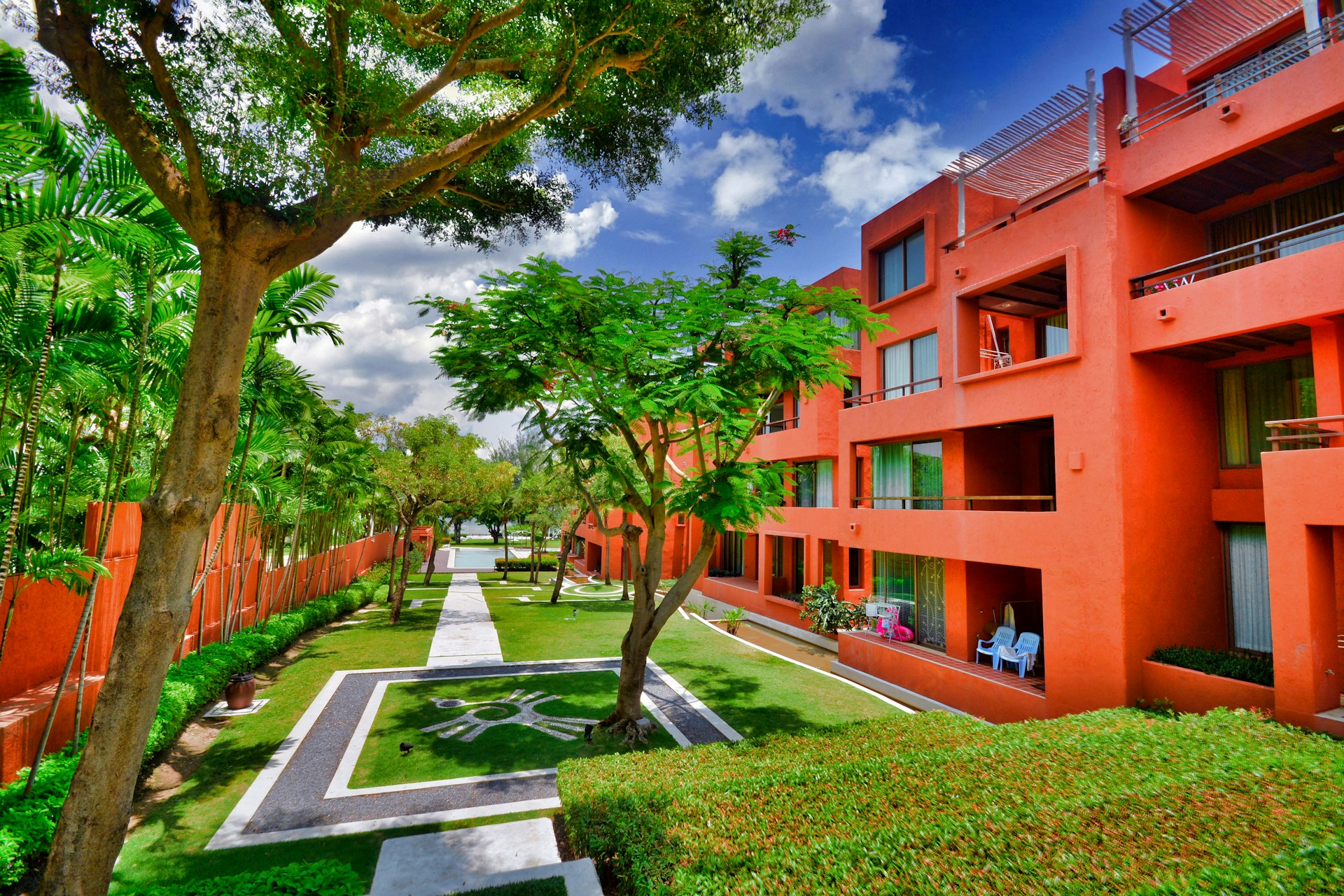Why Apartments with Lawns Are a Game-Changer

Did you know that properties near parks and greenways can appreciate by between 3% to 5%, and in some locations by up to 15%? In today's urban landscape, integrating lawns into apartment developments is more than just an aesthetic decision—it's a strategic investment. For real estate developers, incorporating green spaces doesn't just enhance a property's appearance; it can significantly boost its market value.
This article explores the compelling reasons why lawns are a game-changer in apartment real estate development.
Enhanced Aesthetic Appeal and Marketability
A well-maintained lawn enhances the overall appearance of an apartment complex, making it more attractive to potential buyers and renters. Green spaces create a welcoming environment, adding a sense of openness and tranquility. For developers, this translates into increased marketability and a higher perceived property value. Studies have shown that proximity to green spaces positively impacts property values, further reinforcing the financial benefits of integrating lawns into residential projects.
Beyond visual appeal, lush landscaping can give an apartment complex a competitive edge in an oversaturated market. Prospective tenants increasingly seek access to nature when choosing where to live, and a well-kept lawn signals quality and care. Developers who invest in green landscaping can justify higher rental rates and experience shorter vacancy periods. Proper maintenance is crucial, and working with professional services to maintain a healthy lawn helps sustain long-term visual appeal and functionality.
Community Building and Resident Satisfaction
Shared green spaces within an apartment complex serve as communal areas where residents can gather, socialize, and participate in outdoor activities. These interactions foster a strong sense of community and belonging, leading to greater resident satisfaction and retention. Research indicates that well-planned green spaces encourage outdoor engagement and strengthen social connections among neighbors.
Beyond the social benefits, lawns provide functional spaces for activities such as yoga, picnics, and pet-friendly areas, making an apartment complex even more desirable. Parks and green spaces have been shown to enhance community health by offering recreational opportunities while also contributing to local economic development. Developers who prioritize green spaces in their projects go beyond just building apartments—they create thriving, connected communities that attract long-term residents and drive property value appreciation.
Environmental and Sustainability Benefits
Lawns play a critical role in improving urban environments, offering ecological benefits beyond aesthetics. Green spaces help filter dust, absorb carbon dioxide, and improve air quality. They also mitigate the urban heat island effect, where concrete and asphalt retain heat, leading to higher temperatures in densely populated areas. By incorporating lawns into apartment developments, real estate professionals can create cooler, more comfortable living environments.
Another key benefit is stormwater management. Lawns absorb rainwater, reducing runoff and preventing soil erosion. This natural filtration process helps recharge groundwater and alleviates pressure on municipal drainage systems. Sustainable landscaping practices—such as using native plants and drought-resistant grass varieties—further support water conservation efforts, making lawn integration an environmentally responsible choice.

Additionally, green spaces contribute to biodiversity by providing habitats for birds, pollinators, and beneficial insects. Thoughtfully designed lawns can support local ecosystems while enhancing overall livability. As sustainability becomes a priority for both tenants and investors, incorporating eco-friendly lawn care practices—such as organic fertilizers and water-efficient irrigation systems—aligns developments with green building trends, improving both environmental impact and property desirability.
Economic and Investment Advantages
Incorporating lawns into apartment developments isn't just about aesthetics—it's a financially smart investment for developers. Beyond improving marketability, one of the biggest financial benefits is reduced tenant turnover. Green spaces enhance the quality of life, leading to higher tenant satisfaction and longer lease terms. When residents stay longer, it cuts down on vacancy-related costs, including marketing and new tenant acquisition.
Well-maintained lawns also come with lower long-term maintenance costs compared to hardscaping alternatives. While paved courtyards or artificial turf may require costly repairs over time, natural lawns—when properly cared for—are a more durable and cost-effective solution. Developers can further reduce maintenance expenses by using drought-resistant grass, efficient irrigation systems, and organic fertilizers, making upkeep more sustainable and affordable.
In addition, real estate investors can tap into tax incentives and grants for implementing green infrastructure. Many cities and municipalities offer financial benefits for developments that integrate sustainable landscaping, rainwater management, or eco-friendly design elements. By incorporating lawns, developers can enhance property value while simultaneously benefiting from financial incentives and long-term cost savings.
With sustainability becoming a major factor in real estate investment decisions, green spaces are increasingly recognized as a cost-efficient way to enhance property appeal while keeping operational expenses in check.
Practical Considerations for Developers
Strategic planning is key when integrating lawns into apartment developments. Developers must balance cost-effectiveness, sustainability, and long-term maintenance to ensure that green spaces remain both visually appealing and functional. Factors such as space allocation, irrigation systems, and soil quality all play a crucial role in keeping lawns healthy and attractive.
One major challenge is maintenance. Without proper care, lawns can become overgrown or patchy, diminishing their aesthetic and functional value. Installing automated irrigation systems and opting for drought-resistant, low-maintenance grass varieties can help reduce water usage and upkeep costs. Additionally, using organic fertilizers and integrated pest management can promote sustainability while minimizing reliance on chemicals.
Developers also need to consider HOA regulations and municipal zoning laws that may impact landscaping requirements. Some cities offer incentives for eco-friendly green space designs, presenting opportunities for financial benefits. By working with professional landscaping services and adopting sustainable maintenance practices, developers can ensure that lawns remain an asset—enhancing both resident satisfaction and long-term property value.
Green Spaces as a Smart Investment
By giving gardens and green spaces top priority in apartment buildings, developers are adding long-term value in addition to improving aesthetics. Well-planned green areas increase sustainability, livability, and economic rewards. Incorporating natural features into residential developments has become more than just an amenity as urban environments change; it is also a crucial choice that distinguishes residences in a crowded market.